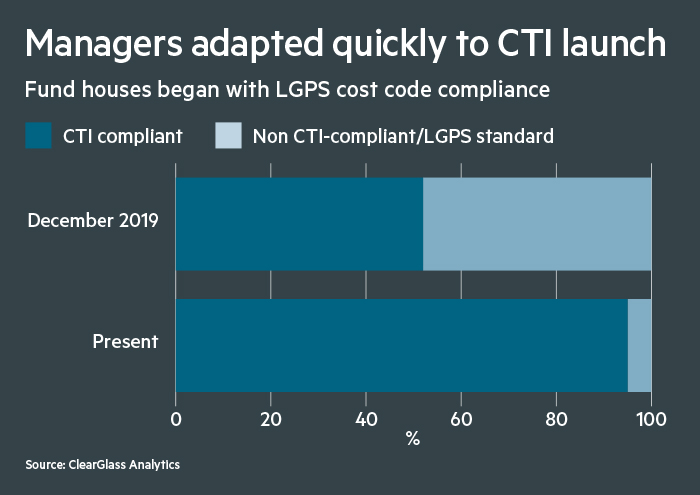Data crunch: In the first of a 10-part series on learnings from the Cost Transparency Initiative, the project’s leader, Chris Sier, busts the myth that asset managers are holding back better understanding of value for money.
One argument put forward by these detractors focuses on the seeming unwillingness of asset managers to engage with cost collection, making the CTI a time-intensive but ultimately fruitless challenge.
The inconvenient truth, however, is that investment managers have generally been fantastic at early adoption.
The willingness to supply is there, and the next decision for trustees and their consultants should not be whether to collect data, but what to do with it
Before the formal release of the CTI standard in May 2019, ClearGlass had already collected about 400 portfolios of data from 40 or more asset managers. Most submitted their data using the Local Government Pension Scheme standard, and only a handful of asset managers used a pre-release version of the CTI standard.
Asset managers meeting expectations
However, by December 31 2019 we had collected more than 3,500 portfolios of data, of which 48 per cent were using the LGPS templates and 52 per cent were using the CTI standard. Managers really did get to grips with the CTI very quickly.
However, this percentage underestimates how many managers are currently capable of working with the CTI standard. Of the 400-plus asset managers from which we have now collected data, only 5 per cent cannot currently give data according to the CTI standard. 
In other words, the vast majority of managers to which we have spoken are now CTI-compliant. I recently heard another data collector claim that only 18 per cent of requests for data were honoured by asset managers, but I do not recognise this figure – our data collection success rate is 98 per cent.
Make no mistake, it is hard work – an awkward manager takes a lot of convincing. But this does not mean it is not worth doing, rather it merely suggests that collecting data requires a good degree of patience, and a willingness to help managers understand how to complete templates and the benefits of being compliant.
Control the controllables
The willingness to supply is there, and the next decision for trustees and their consultants should not be whether to collect data, but what to do with it.
Bluntly, it should be a no-brainer because cost collection is easy, and as a commoditised service it should not be expensive either – that is the whole point of the CTI. Schemes should expect their data to be collected and analysed by their consultant as a matter of course.
In further editions of this column I will lay out the tangible benefits of knowing your full costs. But bear in mind that collecting cost data, and then proving you have done so properly, is, or will soon be, a regulatory requirement in a number of ways.
The Competition and Markets Authority requires fiduciary managers to prove to their clients that they have collected data from underlying fund managers. Defined contribution funds already have to show the value for money they obtain from their managers, and defined benefit funds will need to do so by the autumn.
Schemes should also consider that in the current febrile market environment where you have little control over your fund’s performance, you are left only with trying to manage those things that it is possible to control. Costs are something you can control, as long as you actually measure them.
Dr Chris Sier is chair of ClearGlass Analytics and led the Financial Conduct Authority’s Institutional Disclosure Working Group






















